How Vaas saw the recipe of T-20 success
It was March 16, 1996; still a junior in the national team, Sri Lanka’s young left arm seamer Chaminda Vaas had elevated himself as 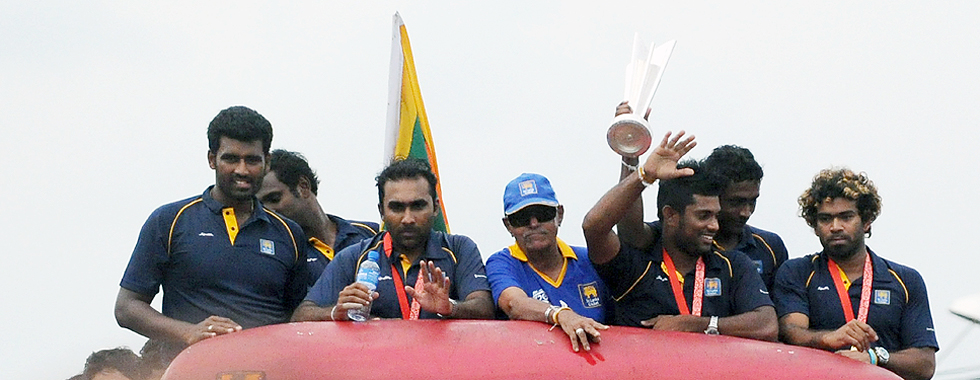 number one component in that department. Yet, next day’s big game – the ICC World Cup final against Australia did not bother him much. Neither the team management nor the seniors had put any pressures on him. They gave him the impression that it was just another game.
number one component in that department. Yet, next day’s big game – the ICC World Cup final against Australia did not bother him much. Neither the team management nor the seniors had put any pressures on him. They gave him the impression that it was just another game.
However, the next morning at the team meeting, the tone changed a bit. At the pre-match discussion, while speaking about how they were going to handle the challenge of facing the high riding Australians, they also discussed about the opportunities that they would create for Lankan cricket, if they won this one match at hand. So for the Sri Lankan team it became the match that they had to win, yet, at the same time it 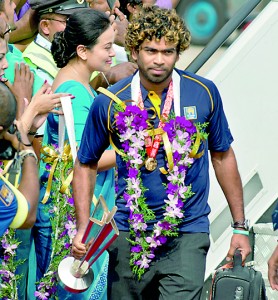 was just another game of cricket that they played in the park.Vaas said: “At any time we were not under pressure. There were no pressures from Colombo — for that matter there were only a few office bearers and about six employees of the Cricket Board. In the morning on the day of the big match, besides our strategies we discussed about the opportunities that we could create for the game in Sri Lanka if we could pull off this important game, yet for me still it was another game of cricket.
was just another game of cricket that they played in the park.Vaas said: “At any time we were not under pressure. There were no pressures from Colombo — for that matter there were only a few office bearers and about six employees of the Cricket Board. In the morning on the day of the big match, besides our strategies we discussed about the opportunities that we could create for the game in Sri Lanka if we could pull off this important game, yet for me still it was another game of cricket.
“However, I only realised the magnitude of this game when I saw the packed Gaddafi  Stadium, in Lahore. It was not a Pakistan team that we were playing, it was Australia. Yet, the stadium was packed. Then, the majority of the crowd present in the ground began to cheer us. That made us believe in ourselves more. Then when Australia batted we stuck to our plans and did not let them run away with the game. We kept them to a manageable target and the rest became history. Thereafter cricket in Sri Lanka was never the same again.”
Stadium, in Lahore. It was not a Pakistan team that we were playing, it was Australia. Yet, the stadium was packed. Then, the majority of the crowd present in the ground began to cheer us. That made us believe in ourselves more. Then when Australia batted we stuck to our plans and did not let them run away with the game. We kept them to a manageable target and the rest became history. Thereafter cricket in Sri Lanka was never the same again.”
This is the narration of Vaas about his experience at the 1996 ICC World Cup final and what transpired in the dressing room and within themselves. Now eighteen years later, Vaas still leads the seam segment of the Sri Lankan cricket arsenal. This time his role is to guide the young 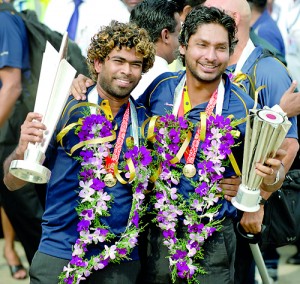 seamers and keep them on target. Yet, in a reverse role he was very much a part of the dressing room when Sri Lanka won its second World Cup.
seamers and keep them on target. Yet, in a reverse role he was very much a part of the dressing room when Sri Lanka won its second World Cup.
It was about being in the right place at the right time. He said: “It began three months ago. We were in Bangladesh on our ICC FTP tour. Initially in the Test matches we played some good cricket and at the same time we were getting acclimatised to the demands of the Bangladeshi wickets and the challenges that come into the game of  cricket. After winning the Test series, we had two close games in the T-20s, where we won by wafer thin margins. It was the turning point. There the boys learned to take up the challenges and overcome, however hard they could be. They began to thrive in tight situations.”
cricket. After winning the Test series, we had two close games in the T-20s, where we won by wafer thin margins. It was the turning point. There the boys learned to take up the challenges and overcome, however hard they could be. They began to thrive in tight situations.”
Vaas was of the view that when a team begins to thrive in tight situations, they begin to perform well as a unit and bring more potency into the type of cricket they play. He said: “Then in the following ODI series, after winning the first match by only thirteen runs, we won the next two games easily. We went into the Asia Cup on a high”.
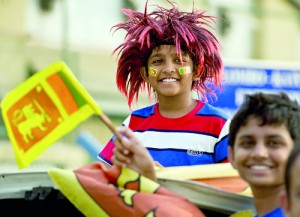 Sri Lanka did badly in the previous Asia Cup, where Pakistan beat Bangladesh in the final. Vaas explained what transpired in 2014. “By the time we came to the Asia Cup we were playing good cricket and the boys were growing in confidence. There was no difference; the seniors and the juniors blended well, making our side the best combination in the park”.
Sri Lanka did badly in the previous Asia Cup, where Pakistan beat Bangladesh in the final. Vaas explained what transpired in 2014. “By the time we came to the Asia Cup we were playing good cricket and the boys were growing in confidence. There was no difference; the seniors and the juniors blended well, making our side the best combination in the park”.
The exercise culminated in Sri Lanka annexing the Asia Cup after 2008. As a result, the cricket administration greeted the players with a fitting welcome.
“While being paraded in the street, the enormity of their achievement sunk into the players. They realised that they had missed this opportunity on four previous occasions. They were discussing, if the situation was this after winning the Asia Cup what it would it be, if we bring home the T-20 World Cup next month. I think the initial plan for that was made on the rooftop of that bus. They really savoured the reactions of the people”.
When the boys were again on Bangladesh soil for the T-20 quest, they were confident and were mentally alert. “We won the practice game against India and it was one impetus. Then in the tournament proper we drew out plans for each opponent and executed them impeccably. Even in the game against England, the first part of the plan worked well where we made 189 runs. Hearts of hearts some of us thought that we may have been about ten runs short that day. Besides that inning by Alex Hales was amazing, it was one point that we could not put our plans into the right perspective. That day even the back-up plans did not work. It does happen sometimes.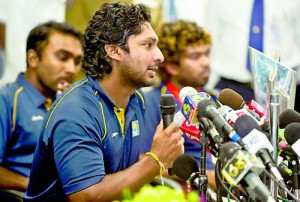
“However coming into the finals, we knew where the Indian strengths lay. We planned to stick to the wide yorker length. That paid dividends. Our back-up plan was the toe -crusher, but, our first plan itself worked and it worked well. T-20 cricket is based upon  dot balls. There are 120 balls and if a side can bowl 50% of it in dot balls, and at the same time minimise the number of boundaries, you are sure of winning that particular match. In this T-20 World Cup in most of the matches we maintained a level 40-45% dot balls. This was backed up by some sharp fielding. I think in the final our fielding was so sharp; they cut off around 15 runs that would have been added to the Indian total. That was a huge bonus for us. I think fielding coach Ruwan Kalpage is doing a tremendous job with the boys. Besides that the team also believes in a result-orientated combination rather than look to the skills of individuals. That makes it easy for the management to make plans — and at the same time when the cricketers begin work to the given plan, it becomes a winning combination.
dot balls. There are 120 balls and if a side can bowl 50% of it in dot balls, and at the same time minimise the number of boundaries, you are sure of winning that particular match. In this T-20 World Cup in most of the matches we maintained a level 40-45% dot balls. This was backed up by some sharp fielding. I think in the final our fielding was so sharp; they cut off around 15 runs that would have been added to the Indian total. That was a huge bonus for us. I think fielding coach Ruwan Kalpage is doing a tremendous job with the boys. Besides that the team also believes in a result-orientated combination rather than look to the skills of individuals. That makes it easy for the management to make plans — and at the same time when the cricketers begin work to the given plan, it becomes a winning combination.
“I believe that was what happened in Bangladesh in 2014. It was a highly motivated combination of players, who always worked to a plan — be it batting, bowling or fielding and that resulted in Sri Lanka winning the second World Cup and as a member of the coaching staff, I am glad that I was a member there in the dressing room.”


